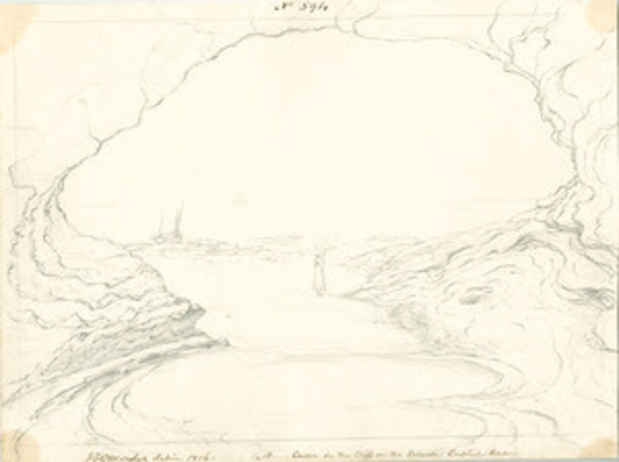Sir John Herschel “Camera Lucida Drawings”
Hans P. Kraus, Jr. Fine Photographs

This event has ended.
Hans P. Kraus Jr. Fine Photographs presents Sir John Herschel’s Camera Lucida Drawings, an exhibition of a dozen 19th-century drawings. Instrumental in the invention of photography, the distinguished scientist Sir John Frederick William Herschel (1792-1872), made the drawings using an instrument known as a camera lucida between 1816 and 1869. The work serves as evidence that optically aided drawings immediately preceded the public invention of photography. Most of the drawings will be on view in New York for the first time.
The camera lucida, literally a “room of light,” was invented at the beginning of the 19th century by William Hyde Wollaston (1766-1828) to render accurate geological drawings. The instrument’s tiny prism allows an artist to view a scene as if it is reflected on a sheet of drawing paper, by simultaneously presenting the scene and the surface of the paper to the eye. An able draughtsman can translate this information and trace the detailed virtual image onto the paper. Herschel’s artistic talents enabled him to create beautiful and precise drawings.
Herschel, a mathematician, astronomer, and chemist, was a skilled draughtsman and embraced the optical device when it was first invented and used it throughout his life, recording cities and landscapes in England and during his extensive travels in Europe. His subjects included the caves and cliffs of Devon in 1816, views of an ancient theatre in Arles in 1850, and a rendering of Stonehenge in 1865, a valuable scientific record of those stones over a century ago.
Famously, it was William Fox Henry Talbot’s frustration with and inability to draw using the camera lucida in the 1830s in Italy that inspired him to invent photography. Herschel was a great supporter and colleague of Talbot, and made enormous contributions to the chemistry, scientific understanding, and terminology of the new art, even coining the term “photography.”
Even so, Herschel continued to prefer the extended contemplative observation made by the camera lucida to Talbot’s photographic process. He made extensive scientific notes on his drawings, and occasional more personal ones, such as the detailed description of the bystander who threw stones at him while he was drawing the ancient theatre at Arles.
The overwhelming majority of Herschel’s camera lucida drawings are now in public collections, including the J. Paul Getty Museum and the Museum of Photographic Arts in California, and in various institutions in South Africa. Only a few of his camera lucida drawings are known to remain in private collections.
The images on view at Hans P. Kraus Jr. Fine Photographs were once in the collection of the musician Graham Nash.
Media
Schedule
from May 20, 2014 to July 31, 2014